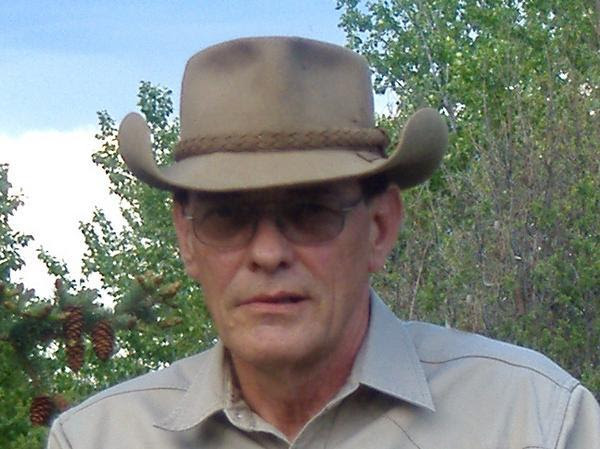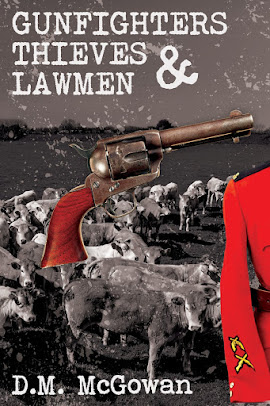I read a quote from author Craig Johnson the other day that
had me thinking about who I am and how I got to be this person. Surely you know
who Craig Johnson is? He’s the writer who created the character Longmire. If
you haven’t read any of the novels or seen at least a half dozen of the TV
episodes then you haven’t lived a full life.
You might not like this, but …
You might not like this, but the US Civil War helped create
who you are.
It doesn’t matter if you are in South
Africa , the events of 1861 to ’65 in U.S.
affect how you live today.
You might not like this, but the 20 million people who died
between 1935 and 1945 affected the person you are.
You might not like this, but both the stupidity of mankind
and the amazing leaps in intellect have changed those who are alive and growing
in the present.
There was a
time when the common man, what today we call the working man, did as he was
told by his “betters”. If the “Lord of the manor” said, “build a bridge here”
or “go to the fiefdom next door and destroy the castle” the working men (and
women), or serfs all picked up their pitch forks and did as they where told.
They did this (and interrupted their own work) because they thought they had to
and because the feeling was that “our betters know what is best.”
As
centuries past and the transmission of news improved (with an increasing
percentage of it actually true) the attitudes of the common people changed. The
promises by “leaders” of more land or an elevated position often turned out to
be outright lies, even if your side won. In later years the promise of a life
pension or (in the New World ) a large parcel of land
(“Wow, a whole hundred acres?”) proved to be inadequate or perhaps impossible
to fulfill.
The advent
of modern war was an even greater shock for those actually conducting it; that
is those “in the trenches.” In the Crimean War (Russia
vs British/French Allies 1853-’56) the common soldier realized that he was
being butchered to gain no tactical advantage. He also began to realize that,
although he was willing to give his life for his senior officers (for king and
country) many of those senior officers thought of the soldiers as so much wood
to be thrown into the fire. And for the winning soldiers, the British, French,
Ottoman Allies only about 1% received anything that could be considered a
pension because the treasuries were empty.
When the US
Civil War took place it not only had excellent coverage from journalists, many
of the battles took place where they could be viewed by the general populace.
The butchery of war then became common knowledge. Many soldiers from both sides
discovered that the ideals they thought they where fighting for had nothing to
do with what was actually happening.
The soldier
of the day still expected, both when he signed up and when in action, to do as
he was told. Those not within the ranks and actually under officer scrutiny began
to talk openly about the shortcomings of their “leaders” or “patrons”. This
“noise from the ranks” traveled around the world and became common even in
societies/armies where such complaints could lead to execution.
Royal Canadian Rifles crossing Paardeberg Drift Feb. 18, 1900
For those
in Commonwealth countries the same change of attitude had started back during
the Crimean War but the Boer War (the second one of 1899) completed this
change. Many men of an adventurous bent formed armies (Lord Strathcona’s Horse)
or joined existing battalions (Royal Canadian Regiment) to support King and
Country and prove the importance of Canada (or Australia, India, Irish,
Scottish, etc.) to England. When it was all over the treatment of soldiers and
the mistreatment of the enemy did much to convince veterans that the “old
country” could, in the future, stamp out their own damn snakes.
As a result
of history showing us “peons” that our “betters” not only where not better but
where often not as good, there was serious hesitation about going to Europe
during the years of WWI. Citizens of Commonwealth countries lobbied against
conscription or avoided it after it was passed. American citizens aggressively
fought their country joining the conflict until their inclusion was almost too
late.
Princess Patricia Canadian Light Infantry "over the top"
Feb. 28, 1915
A similar
attitude interfered with many of the same countries which became involved in
WWII. In addition there was a strong feeling in the thirties and into the first
few years of the war that the German Chancellor was the answer to corruption in
government. By the time it became common knowledge that he was the greatest
threat to mankind on the planet he was almost too strong to defeat.
This change
in attitude about patrons, leaders and government in general lead to other
difficulties that had nothing to do with war in its normally accepted sense.
As an example, a great many well
meaning people decided in the early part of the 20th century that it
would be a great idea to ban alcohol except for medicinal use.
In Canada
prohibition only existed federally from 1918 to 1920. However it existed in
towns and provinces to some extent for more than 50 years. In Prince
Edward Island it was from 1901 to 1948 and I can
remember Owen Sound , Ontario
Federal prohibition in the USA
was begun under the Eighteenth Amendment in January of 1920. It was eventually
repealed in 1933 under the Twenty First Amendment.
Why where these acts or laws
passed? Because more than fifty years of history influenced the formation of “Temperance
Leagues”. These clubs concentrated on and actually advertised the destruction
caused to society in general and to families in particular by the over
indulgence in alcohol. There was surely a great deal of exaggeration taking
place but everyone, even those not directly affected by drunks recognized that
serious problems existed.
Thus the banning of alcohol.
So what did prohibition accomplish?
Did it ensure the working man went to work, paid his debts and supported his
family?
Not at all.
The populace in general consumed
more alcohol than they had when it was legal. This was partly due to the
“thrill” of doing something illegal. However, it was mostly due to societies
efforts to show the law makers that they didn’t speak for “every man.” Another
consideration was to deliver the message that government officials needed to
listen to what the public wanted and not what some special interest group
thought was best.
The “serfs” would no longer blindly
follow the orders of those who thought they were “patrons” and “leaders”. Most
began to think of these government people as subjects or servants of the common
man.
Prohibition also resulted in
several psychopaths and thugs becoming extremely rich. Since these anti-societal
individuals were also defying the unpopular laws they became folk heroes and without
help from the general public it was difficult to eradicate them.
Does any of this history sound
familiar to those who where not aware of it? Are there any parallels to be
found in today’s news?
There are many who want to
eliminate the statues of Robert E. Lee and Jefferson Davis. Canada ’s
first PM, John A. McDonald is reviled today as a drunk and an egomaniac.
Winston Churchill is often portrayed as a war monger. There are many in today’s
world who would deny that any human could perpetrate what is known as the
“holocaust”. And there are aboriginals who want to portray Kit Carson as a
traitor and a murderer.
John A. McDonald
Kit Carson in 1850
All of these people and their actions,
whether we know about them or not,
have combined to create the person I am, and you are, today. Louis Riel and
Gabriel Dumont affected the Métis people of today but also every other Canadian
as well. The same can be said of Lenin, Stalin, Hitler, Göring, or Hussein;
they affected their own people but also those on the other side of the globe
who would like to forget they existed.
Louis Riel's children, Jean Louis
and Angelique
The quote from Craig Johnson? It
was in a recent issue of “Roundup” magazine from Western Writers of America.
The part that had me thinking about who I am (and you are) was “To turn a blind
eye to whom we were in our past is to forget who we are today.” That is why he
is such a popular author; he said what I have been saying for decades in a
manner that is concise and understandable.
Here is some more of Johnson. “Even
in writing fiction I think you have a responsibility to inform in a truthful
manner.” When writing historical fiction the author must first know
the history so that, despite being fiction it is presented in a method true to
the times so that the reader might accept it as valid.
Another quote I find interesting is
from David McCullough; “The problem is the way we teach it. History never
happened in the past. It happened in the present for those who made it.”
I realize that it has become
acceptable in today’s entertainment, even necessary to include as many curse
words in a story as many times as possible. However I try to avoid the use of
any if at all possible. And even though many see “history” as a very bad curse
word it isn’t.
It is what makes you … you.
Now none of this means that you
have to buy one of my novels although I would like it if you did and then left
a review at Amazon.com. However, I would sure like you to think about what you
just read here and leave a comment.


















